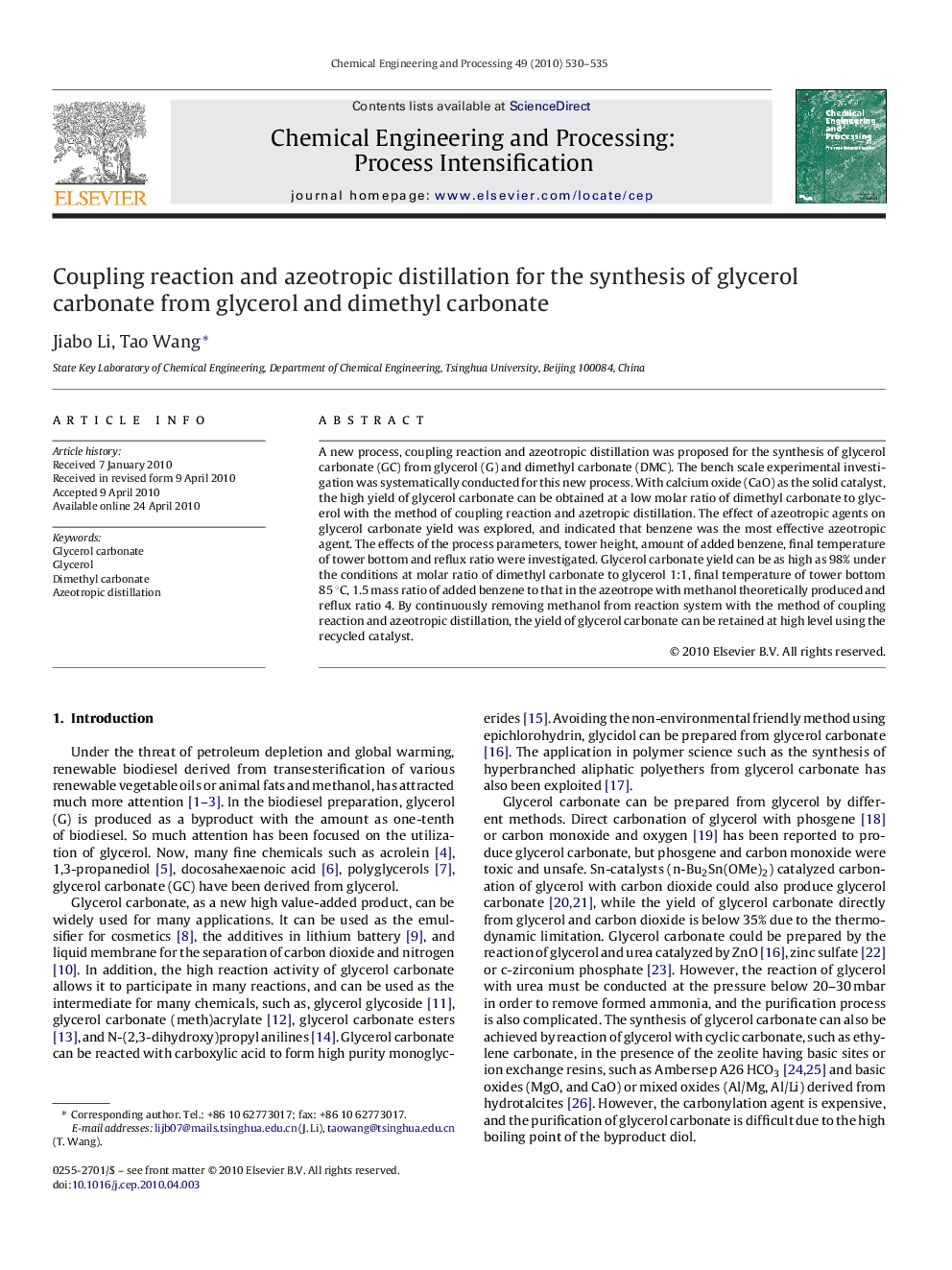| Article ID | Journal | Published Year | Pages | File Type |
|---|---|---|---|---|
| 687927 | Chemical Engineering and Processing: Process Intensification | 2010 | 6 Pages |
A new process, coupling reaction and azeotropic distillation was proposed for the synthesis of glycerol carbonate (GC) from glycerol (G) and dimethyl carbonate (DMC). The bench scale experimental investigation was systematically conducted for this new process. With calcium oxide (CaO) as the solid catalyst, the high yield of glycerol carbonate can be obtained at a low molar ratio of dimethyl carbonate to glycerol with the method of coupling reaction and azetropic distillation. The effect of azeotropic agents on glycerol carbonate yield was explored, and indicated that benzene was the most effective azeotropic agent. The effects of the process parameters, tower height, amount of added benzene, final temperature of tower bottom and reflux ratio were investigated. Glycerol carbonate yield can be as high as 98% under the conditions at molar ratio of dimethyl carbonate to glycerol 1:1, final temperature of tower bottom 85 °C, 1.5 mass ratio of added benzene to that in the azeotrope with methanol theoretically produced and reflux ratio 4. By continuously removing methanol from reaction system with the method of coupling reaction and azeotropic distillation, the yield of glycerol carbonate can be retained at high level using the recycled catalyst.
